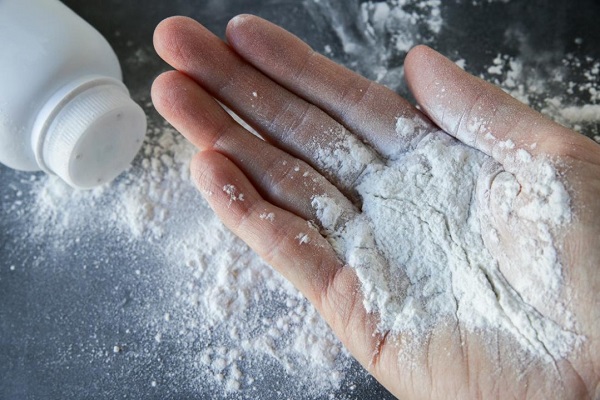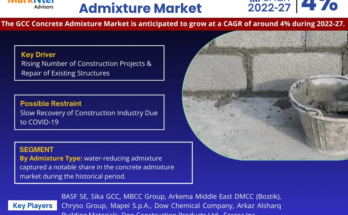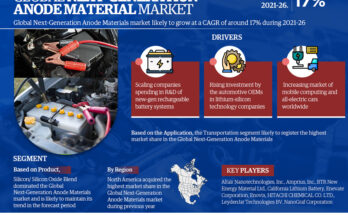Global Talc Market has valued at USD2.27 billion in 2022 and is anticipated to project robust growth in the forecast period with a CAGR of 3.86% through 2028. Talc is a clay mineral composed of hydrated magnesium silicate. It is found in foliated to fibrous masses and occurs in rare crystal forms. Talc, commonly known as baby powder when combined with corn starch, is a widely used substance. It serves as a lubricant and thickening agent with applications in ceramics, paint, roofing material, and various cosmetic products. Talc, a natural mineral mined from the earth, consists of magnesium, silicon, oxygen, and hydrogen. With the chemical formula Mg3Si4O10(OH)2, talc is a hydrous magnesium silicate. Although odorless and insoluble in water, it exhibits limited chemical reactivity despite its affinity for certain organic compounds.
Non-flammable and non-explosive, talc is highly sought after by several industries for its resistance to heat, electricity, acids, oil, and grease absorption. Its desirable characteristics include mineral softness, fragrance retention, purity, and white color. Talc finds application in a wide range of industries, including cosmetics, personal care, paper, plastics, paints, coatings, rubber, food, electrical cables, pharmaceuticals, and ceramics. Steatite, commonly known as soapstone, is the natural form of talc, often used in electrical panels, slabs, and other products due to its heat, electricity, and acid resistance.
It is also utilized in medicinal products and as a preservative or food ingredient. Talc is employed in pleurodesis in medicine to prevent recurrent pneumothoraxes or pleural effusions. The automotive industry plays a significant role in driving the demand for talc. Talc-reinforced polypropylene is used to produce lightweight plastic parts in automotive applications, enhancing performance, durability, and resistance to abrasion and corrosion. Furthermore, the growth of the talc market is propelled by the expanding automotive refinish market and the thriving OEM components market. The rapid industrialization in emerging economies such as Thailand, Malaysia, Mexico, Brazil, Argentina, Russia, South Africa, China, and India also contributes to the growth of the talc market, given its diverse applications across various end-use industries.
Key Market Drivers
Growing Demand of Talc in Pharmaceutical Industry
In the realm of minerals and industrial compounds, talc has long been acknowledged for its multifaceted properties. The increasing demand for talc in pharmaceutical applications has emerged as a pivotal driving force, reshaping the landscape of the talc market and propelling it to unprecedented heights. Talc, with its inherent characteristics of softness, purity, and fine particle size, has garnered attention from the pharmaceutical sector for its wide range of applications. Its neutral chemical composition makes it an ideal excipient for drug formulation, serving various critical roles. Talc acts as a lubricant, facilitating the smooth processing of pharmaceutical products during manufacturing. Additionally, it functions as a glidant, enhancing the flow of powdered drugs and promoting uniform mixing. These attributes have solidified talc’s status as an indispensable ingredient in the pharmaceutical formulation process. Moreover, talc’s exceptional absorbent qualities find utility in medicinal and dermatological applications. Talcum powders, which feature talc as the primary ingredient, are valued for their moisture-absorbing properties, making them invaluable for managing skin conditions and promoting hygiene. Since talc is chemically inert and physically stable, it imparts these desirable attributes to pharmaceutical products without compromising their efficacy or safety.
Download FREE Sample Report @ https://www.techsciresearch.com/sample-report.aspx?cid=2682
The growing trend of health-conscious consumers seeking alternative remedies, herbal supplements, and natural treatments has amplified the demand for talc-based products. Talc’s utilization in various traditional and alternative medicine formulations has gained traction due to its compatibility with natural and plant-derived ingredients. The pharmaceutical industry is experiencing rapid advancements in drug delivery methods, including inhalers, dry powder inhalers, and controlled-release tablets. Talc’s lubricating and flow-enhancing properties play a pivotal role in ensuring the efficacy and reliability of these sophisticated drug delivery systems. Regulatory bodies worldwide emphasize the necessity of safe and consistent drug formulations. Talc’s reputation for purity, stability, and compatibility with active pharmaceutical ingredients (APIs) positions it as a preferred choice among pharmaceutical manufacturers striving to meet stringent regulatory standards.
Increasing Demand of Talc in Paints & Coatings Industry
In recent years, a significant driver of growth in the global talc market has been the growing demand for talc in the paints and coatings industry. This trend is fueled by talc’s exceptional attributes that enhance performance and aesthetic appeal in various coating applications. Talc, a naturally occurring mineral, is known for its softness, smoothness, and excellent chemical and thermal stability. Within the paints and coatings industry, talc serves primarily as a functional filler and extender, offering a wide range of benefits to coating formulations. As a sought-after ingredient, talc provides several advantages for manufacturers. One key advantage of talc in coatings is its ability to improve opacity and coverage. The fine particle size and high aspect ratio of talc contribute to efficient light scattering, resulting in coatings with superior hiding power. This property is particularly valuable when formulating paints for applications requiring a uniform and even finish, such as interior wall paints. Furthermore, talc’s inherent hydrophobicity and chemical inertness make it an ideal choice for moisture-sensitive coatings. Acting as a barrier, talc protects the underlying substrate from moisture intrusion, thereby enhancing the durability and lifespan of the coated surface. Talc’s resistance to chemicals and heat also contributes to the longevity of coatings, making it suitable for various environmental conditions. Apart from its functional advantages, talc enhances the aesthetic appeal of coatings. It can impart a matte finish to coatings, reducing surface glossiness. This property is particularly desirable in architectural and decorative coatings, where a more subdued and sophisticated appearance is sought after. Additionally, talc can be utilized to create textured coatings, adding depth and dimension to surfaces. The increasing demand for environmentally friendly coatings has also driven the rise in talc usage. As a naturally occurring mineral, talc reduces the need for synthetic additives and fillers with a larger environmental footprint. In an industry where sustainability plays an increasingly significant role, talc’s natural origin and minimal environmental impact align well with these preferences. With construction activities surging, especially in emerging economies, the demand for architectural coatings is on the rise. This translates to an increased need for talc as a key ingredient in paints, primers, and other coating formulations. The growing demand for talc not only strengthens the global talc market but also reflects a broader shift towards innovative and eco-friendly solutions that enhance the performance and visual appeal of coatings across industries.
Growing Demand of Talc in Plastics Industry
In the ever-evolving landscape of industrial materials, talc has emerged as a remarkable catalyst, particularly within the plastics sector. The global talc market is witnessing a significant surge in demand, mainly attributed to its indispensable role in enhancing the performance and properties of plastic products. As the plastics industry continues to expand and diversify, the influence of talc as an essential additive becomes increasingly apparent. Talc, a naturally occurring mineral renowned for its softness and versatility, seamlessly integrates itself into the plastics industry. Its unique properties make it an ideal choice for enhancing the structural, mechanical, and aesthetic attributes of plastic products. The incorporation of talc into plastics results in a composite material that exhibits improved strength, dimensional stability, thermal resistance, and surface finish. The partnership between talc and plastics extends to various plastic types, including polypropylene, polyethylene, and thermoplastic elastomers. Each plastic variant benefits from talc’s influence in distinct ways. For instance, polypropylene experiences augmented stiffness and heat resistance, making it an optimal choice for automotive components and appliances. Thermoplastic elastomers, on the other hand, acquire enhanced durability and elasticity, making them indispensable for a plethora of applications, from footwear to industrial machinery. Talc’s innate ability to reinforce plastics without compromising their intrinsic characteristics makes it a highly sought-after additive. By incorporating talc, manufacturers can produce lighter yet more robust products, aligning with the modern demands for efficiency and durability. Talc offers a cost-effective means of enhancing plastic properties. As raw material costs rise and environmental concerns become more prominent, manufacturers are seeking economical solutions that maintain or improve product quality. Talc’s benign nature and compatibility with stringent regulatory requirements make it an attractive choice for the plastics industry. As environmental and health regulations evolve, the demand for safer additives like talc continues to rise. The applications of plastic products are rapidly expanding, ranging from automotive components and consumer goods to packaging materials and industrial equipment. This diversification necessitates tailored materials that meet specific performance criteria, which talc-infused plastics readily provide. As manufacturers of plastic products increasingly recognize the advantages of talc-enhanced materials, the demand for talc is expected to escalate across diverse sectors and geographies. This surge in demand has prompted talc suppliers to explore innovative extraction techniques and enhanced processing technologies to meet market needs sustainably. Moreover, the integration of talc in plastics has spurred research and development efforts to optimize formulations and create novel applications. Collaborations between talc producers and plastic manufacturers are fostering a dynamic environment of innovation, leading to the discovery of new ways to leverage talc’s unique properties.
Key Market Challenges
Regulatory Compliance and Health Concerns
The talc industry operates within a complex regulatory landscape, with diverse regions and countries imposing varying standards and requirements. Regulatory compliance spans a wide spectrum, encompassing quality control, purity levels, labeling, and environmental considerations. This complexity arises from the wide-ranging applications of talc, each subject to its own set of regulations. One notable regulatory concern in the talc market revolves around asbestos contamination. Talc deposits often occur in close proximity to asbestos deposits, thereby raising concerns of cross-contamination. Asbestos, a known carcinogen, poses significant health risks when present in talc-based products. The challenge lies in ensuring that talc utilized in consumer goods is free from asbestos contamination, necessitating stringent testing and quality assurance measures.
Disruptions in Supply Chain
Talc, a mineral renowned for its inherent softness and versatile properties, plays a vital role as a crucial ingredient in numerous consumer and industrial products. From personal care items like cosmetics and body powders to plastics, ceramics, and even paints, the unique characteristics of talc make it an indispensable raw material in modern manufacturing processes. The extraction and processing of talc involve a resource-intensive mining process that demands careful attention. Natural disasters, geopolitical tensions, and labor disputes have the potential to disrupt mining operations, leading to supply interruptions. For example, regions that serve as major talc producers may encounter unforeseen challenges arising from political instability or environmental concerns, resulting in decreased production. Efficient transportation and logistics are of utmost importance to ensure the timely delivery of talc to manufacturers worldwide. Disruptions in shipping routes, container shortages, and port closures can cause delays in the movement of talc from production centers to end-users. Such delays can lead to production slowdowns, increased costs, and ultimately have a negative impact on the availability of talc-based products.
Key Market Trends
Technological Advancements
The global talc market, a pivotal component in various industries, is undergoing a significant transformation driven by rapid technological advancements. From the realm of cosmetics to automotive manufacturing, the applications of talc are diverse and far-reaching, and these innovations are reshaping its production, processing, and utilization. Technological advancements have revolutionized these processes, rendering them more precise, efficient, and environmentally sustainable. Digital technologies such as Geographic Information Systems (GIS) and remote sensing have empowered geologists to identify potential talc deposits with heightened accuracy, thereby reducing the necessity for invasive exploration methods and minimizing ecological impact. Moreover, data analytics and predictive modeling are being leveraged to optimize mining operations. Real-time monitoring of mining equipment, predictive maintenance, and automation are enhancing safety and productivity in talc mines. This integration of technology not only enhances operational efficiency but also promotes sustainability by minimizing waste and resource consumption.
Segmental Insights
Type of Deposition Insights
In 2022, the Talc market was dominated by the talc carbonate and is predicted to continue expanding over the coming years. Talc carbonates are a group of rock and mineral compounds discovered in metamorphic ultramafic rocks. The term pertains to two predominant end minerals identified in ultramafic rocks that have experienced carbonization or talc carbonization reactions: talc and the carbonate mineral magnesite.
Application Insights
In 2022, the Talc market was dominated by plastics and is predicted to continue expanding over the coming years. The plastics segment is anticipated to emerge as the largest end-use industry segment in the Talc Market. Talc finds application as an anti-blocking agent in polyethylene, aiding in the restoration of mechanical properties in recycled plastics. Additionally, talc serves as a nucleating agent in biopolymers and semi-crystalline polymers. In the automotive sector, the incorporation of talc in polymer compounds helps enhance the stability of fenders and develop highly scratch-resistant dashboards.
Related Reports
Cellulose Acetate Market [2028] – Analysis, Trends, & Insights
Persulfates Market [2028]: Trends & Forecast
Table of Content-Talc Market
- Product Overview
1.1. Market Definition
1.2. Scope of the Market
1.2.1. Markets Covered
1.2.2. Years Considered for Study
1.2.3. Key Market Segmentations
- Research Methodology
2.1. Objective of the Study
2.2. Baseline Methodology
2.3. Key Industry Partners
2.4. Major Association and Secondary Sources
2.5. Forecasting Methodology
2.6. Data Triangulation & Validation
2.7. Assumptions and Limitations
- Executive Summary
3.1. Overview of the Market
3.2. Overview of Key Market Segmentations
3.3. Overview of Key Market Players
3.4. Overview of Key Regions/Countries
3.5. Overview of Market Drivers, Challenges, Trends
- Voice of Customer
- Pricing Analysis
- Global Talc Market Outlook
6.1. Market Size & Forecast
6.1.1. By Value & Volume
6.2. Market Share & Forecast
6.2.1. By Type of Deposition (Talc Chlorite, Talc Carbonate, Others)
6.2.2. By Application (Ceramics, Paper & Pulp, Pharmaceutical, Paints & Coatings, Plastics and Others)
6.2.3. By Company (2022)
6.2.4. By Region
6.3. Market Map
- North America Talc Market Outlook
7.1. Market Size & Forecast
7.1.1. By Value & Volume
7.2. Market Share & Forecast
7.2.1. By Type of Deposition
7.2.2. By Application
7.2.3. By Country
7.3. North America: Country Analysis
7.3.1. United States Talc Market Outlook
7.3.1.1. Market Size & Forecast
7.3.1.1.1. By Value & Volume
7.3.1.2. Market Share & Forecast
7.3.1.2.1. By Type of Deposition
7.3.1.2.2. By Application
7.3.2. Mexico Talc Market Outlook
7.3.2.1. Market Size & Forecast
7.3.2.1.1. By Value & Volume
7.3.2.2. Market Share & Forecast
7.3.2.2.1. By Type of Deposition
7.3.2.2.2. By Application
7.3.3. Canada Talc Market Outlook
7.3.3.1. Market Size & Forecast
7.3.3.1.1. By Value & Volume
7.3.3.2. Market Share & Forecast
7.3.3.2.1. By Type of Deposition
7.3.3.2.2. By Application
- Europe Talc Market Outlook
8.1. Market Size & Forecast
8.1.1. By Value & Volume
8.2. Market Share & Forecast
8.2.1. By Type of Deposition
8.2.2. By Application
8.2.3. By Country
8.3. Europe: Country Analysis
8.3.1. France Talc Market Outlook
8.3.1.1. Market Size & Forecast
8.3.1.1.1. By Value & Volume
8.3.1.2. Market Share & Forecast
8.3.1.2.1. By Type of Deposition
8.3.1.2.2. By Application
8.3.2. Germany Talc Market Outlook
8.3.2.1. Market Size & Forecast
8.3.2.1.1. By Value & Volume
8.3.2.2. Market Share & Forecast
8.3.2.2.1. By Type of Deposition
8.3.2.2.2. By Application
8.3.3. United Kingdom Talc Market Outlook
8.3.3.1. Market Size & Forecast
8.3.3.1.1. By Value & Volume
8.3.3.2. Market Share & Forecast
8.3.3.2.1. By Type of Deposition
8.3.3.2.2. By Application
8.3.4. Italy Talc Market Outlook
8.3.4.1. Market Size & Forecast
8.3.4.1.1. By Value & Volume
8.3.4.2. Market Share & Forecast
8.3.4.2.1. By Type of Deposition
8.3.4.2.2. By Application
8.3.5. Spain Talc Market Outlook
8.3.5.1. Market Size & Forecast
8.3.5.1.1. By Value & Volume
8.3.5.2. Market Share & Forecast
8.3.5.2.1. By Type of Deposition
8.3.5.2.2. By Application



